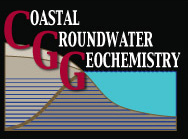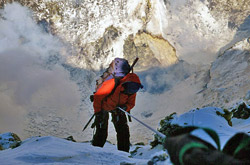Melt Generation and Transport During Basalt Petrogenesis:
Constraints from Measurements of 227Ac-231Pa Activity Ratios
Uranium-series isotopes have provided unique insight into geochemical rates and processes during genesis of basaltic magma from the earth's mantle. Specifically, recent measurements of the longer-lived isotopes of the U-decay series have placed important constraints on melting rates (related to solid mantle upwelling rates) and melt fractions. However, there have been relatively few measurements of the shorter-lived isotopes of the U decay series in basaltic samples. As a result, time-dependant parameters such as melt transport rates and magma storage times are not well known. To better constrain these parameters, under this SGER award, the PIs propose to measure short-lived 227Ac (t1/2 =21.8 y) in young basaltic samples from mid-ocean spreading centers and intraplate volcanoes like Hawaii. This geochronologic system has the potential to be an important chronometer for dating of young mid-ocean ridge basalts in the time range of 10-100 years. Development of a new counting technique for 227Ac has simplified its analysis making this research possible for the first time.
Dulaiova, H.D., K.W. Sims, and M.A. Charette. (2013) A new method for the determination of low-level actinium-227 in geological samples. Journal of Radioanalytical and Nuclear Chemistry, 296, 279-283.
Sims, K.W.W., S. Pichat, M. Reagan, P. Kyle, H. Dulaiova, N. Dunbar, J. Prytulak, G. Sawyer, G. Layne, J. Blichert-Toft, P. Gauthier, M. Charette, and T. Elliott. (2013) On the timescales of magma genesis, melt evolution, crystal growth rates, and magma degassing in the Erebus volcano magmatic system using the 238U, 235U, and 232Th decay series. Journal of Petrology, 54, 235-271.


